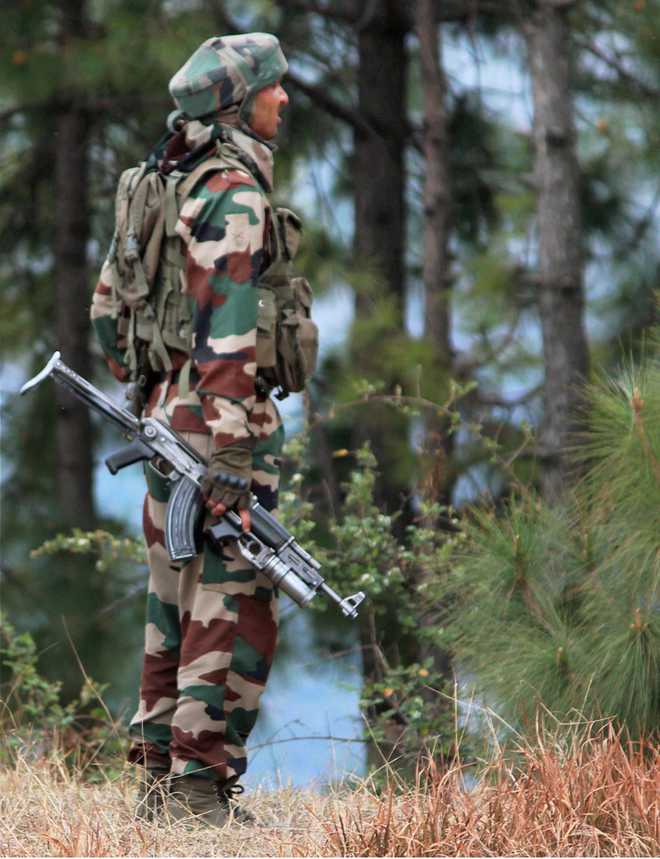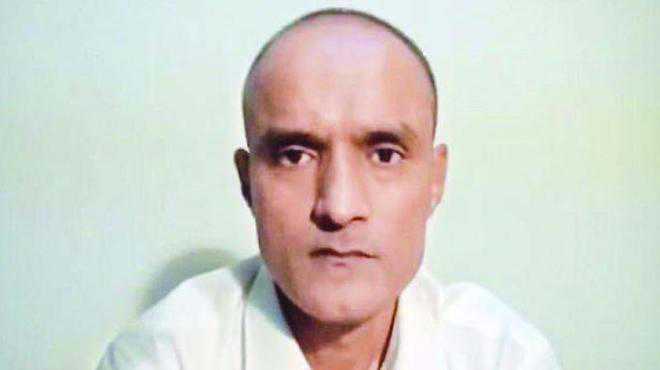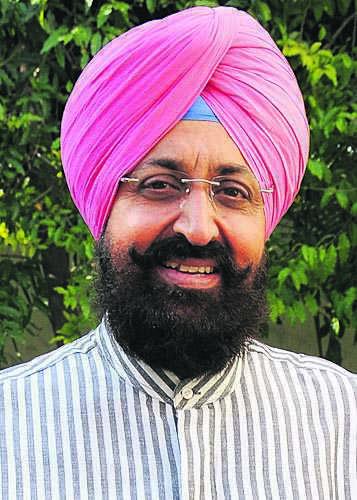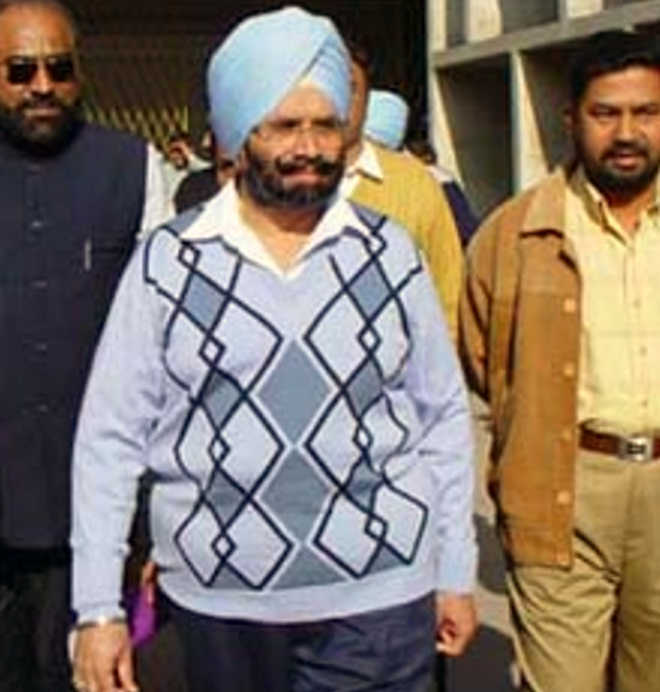
A security man with a pellet gun stands guard during curfew in Srinagar. PTI file photo
Satya Prakash
Tribune News Service
New Delhi, March 27
The Supreme Court today asked the Centre to look for an alternative to pellet guns in Jammu and Kashmir where hundreds of youngsters have suffered serious injuries during various protests since the killing of Hizbul Mujahideen terrorist Burhan Wani in July last year.A three-Judge Bench headed by Chief Justice JS Khehar, however, agreed with Attorney General Mukul Rohatgi’s submission that the nature of weapons used by the forces could not be judicially determined.It said the alternative weapon and strategy for its use could be tested at four or five places where protests were frequently held.The Attorney General, who submitted a sealed cover report to the court, said the interim report prepared in October last was still being examined by security experts. The court asked him to come up with further suggestions in four weeks. Expressing concern over the death of youngsters, the court told Rohatgi, “Go by our spirit.” The suggestion came during a hearing on a petition by the Jammu and Kashmir Bar Association (Kashmir) against an order of the state High Court, refusing to ban the use of pellet guns.Senior counsel Zafar Shah told the Bench that many a young boy had lost an eye. Fifty persons had died and 300 had been partially or totally blinded. Pointing out that “4,000 more pellet guns have been imported,” Shah said pellet guns were not being used in any other state, save Kashmir. “It wasn’t used in Haryana where so much violence and damage to property took place,” he said.Shah suggested that instead of targeting the crowd by pellet guns, rifles could be used against selected protesters resorting to violence. “Are you saying that the security forces should use actual guns,” the Bench asked. As Shah answered in the affirmative, the Attorney General disapproved of the use of actual guns.Rohatgi said it was difficult to distinguish between young and adult protesters. “It is not a simple protest… There are anti-national protests…Protesters are often used as shield by militants to attack security forces. I am not justifying the casualties. But that’s the situation there,” he said.Rohatgi drew the court’s attention to the 1,522 attacks on the CRPF between July 8, the day Wani was killed, and August 11, 2016. On behalf of Jammu and Kashmir, Advocate General Jahangir Iqbal Gabi said pellet guns were being used as the last resort to contain mob violence, pointing out that between July 8 and August 11 last year, 3,777 policemen had been injured and two had died in mob violence. At one point the Bench suggested that parents of the boys indulging in violence be acted against.“Why don’t you take action against the parents of these children,” the Bench asked. But the Attorney General said, “If we start acting against parents, it will create an upheaval.” He said a 17 or 18-year-old boy was not under the “complete control of his parents”.
What court said
- A three-Judge Bench headed by Chief Justice JS Khehar agreed with Attorney General Mukul Rohatgi’s submission that the nature of weapons used by the forces could not be judicially determined
- It said the alternative weapon and strategy for its use could be tested at four or five places where protests were frequently held



































































